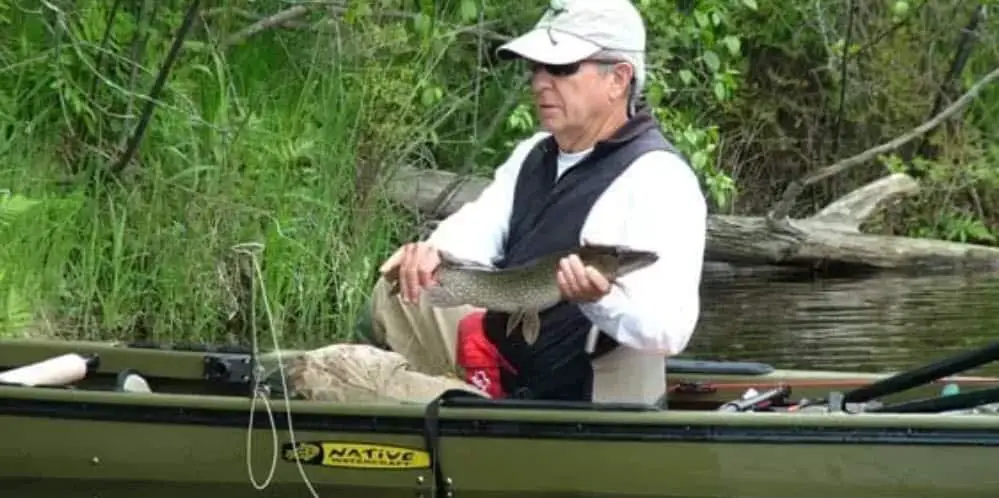Kayak Bass Fishing: Rigging For Fly Fishing

Hey guys, a few tips on what you’re going to need to do when you make the decision on taking your kayak out for some Kayak Bass Fishing: fly fishing. Fly fishing from a kayak presents a whole new set of problems, and unless you’ve spent a number of hours on the water to figure them out, you’re going to have a rough ride ahead when you start throwing some fur and feathers.
Tip #1: Drop the amount of gear you’re carrying! – The last thing that you want happening when you hook up with a nice bass is having your fly line get stuck on various objects inside of your kayak. Everything from your foot pegs, gear lanyards, rod holders, and even your fishing crate are all hanging objects that will catch your fly line at some time or another. When you’re fly fishing for bass from a kayak, keep it simple and bring only your rod, a box of flies, a set of clippers, and a set of needlenose pliers. Everything else is just a recipe for disaster
Tip #2: Bring an anchor, and hook it up to a trolley! – The point of fishing from a kayak is to slow down and work the area where you’re at; usually areas where other boats can’t hit. Unless you enjoy picking up your paddle every 60 seconds to reposition yourself, you’re going to need some method for holding the boat in place, and give yourself some time to pick apart different pieces of structure – stumps, lily pads, current breaks, you name it. An anchor trolley lets you reposition the boat so you’re always pointed straight at your target, and have the best position for generating the most power on your hookset.
Tip #3: Learn to manage your line in tight quarters! – When I’m fishing for bass from a kayak, one of the most important things I like to do is to strip my line down into the water. This method of line stripping keeps it well out of your way, but still gives you access to it – uncoiled – when you’re ready to give the rod tip a hard jerk and set the hook abruptly. It also helps to minimize the amount of tangles that you get inside of the boat.
Ya’ know, these may sound like common sense to most people, but like I said above, unless you’ve actually gotten out onto the water and figured out what works and what doesn’t, it can be pretty frustrating, to say the least. I’ve logged hundreds, if not a thousand or more hours on a kayak, chasing my favorite sport fish, so I’ve had the time to figure out what some of the most frustrating aspects.
If you havent gotten a fishing kayak yet or are looking to upgrade, we have a helpful guide to find the best fishing kayak.
